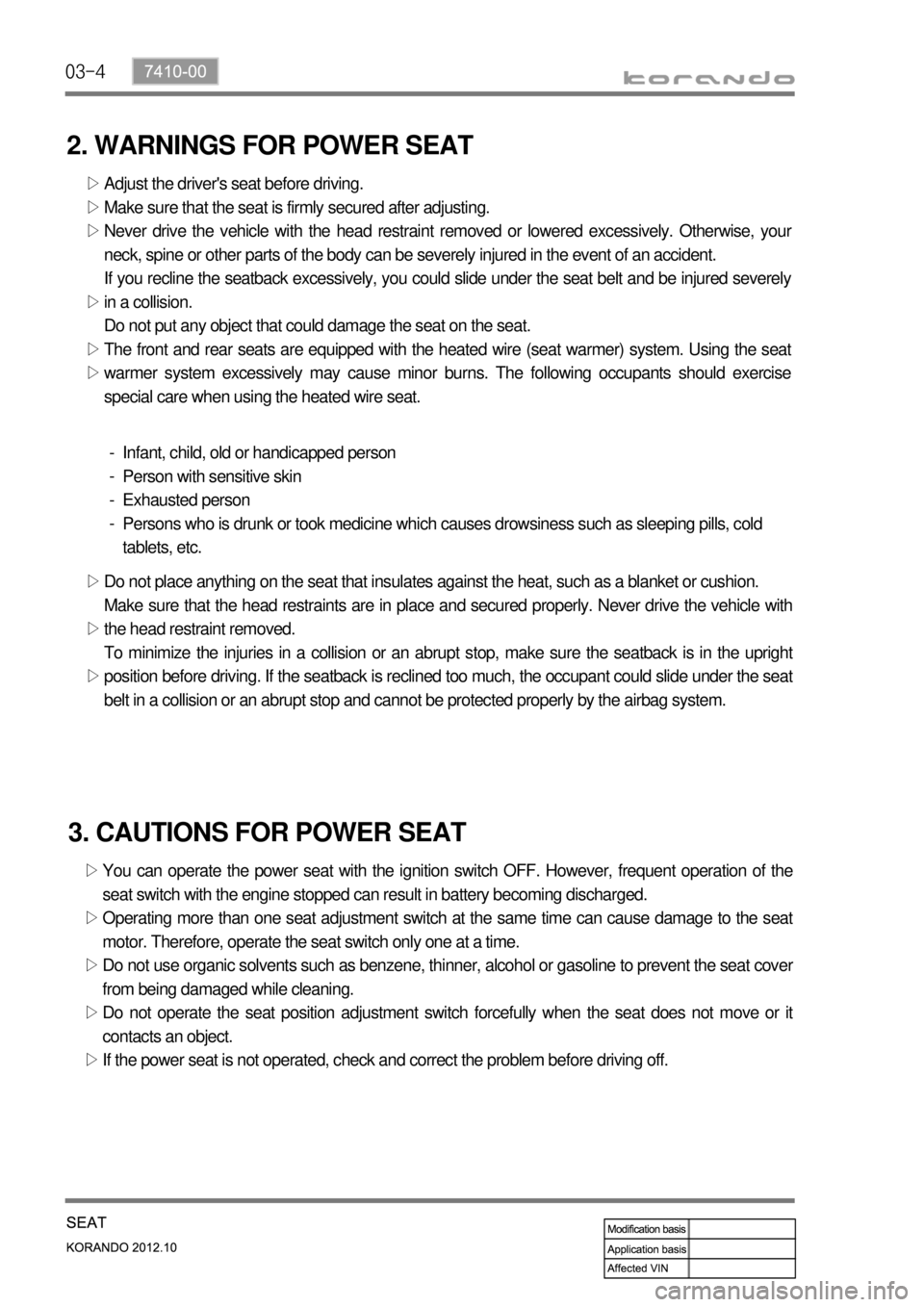Page 1030 of 1082
02-14
2) Air Bag Deployment Signal Output (Crash Out)
When a situation which requires air bag deployment occurs, they system outputs the air bag deployment
signal (crash out). If another air bag-required situation occurs while the deployment signal is sent, the
second crash out will be delayed until the current 200 ms crash out is completed. (The tolerance at the
time of signaling is ±5%)
The signal repeats increasing for 390 msec. and decreasing for 10 msec. before crash. At the time of
crash, the switch is closed and the signal is kept low condition for 200 msec.
At the time of crash, the crash out signal is changed to the low condition for 200 ms immediately to
indicate the crash moment.
Page 1032 of 1082
02-16
3) CAN Communication Interface (FIS and SIS)
The CAN communication interface uses the PWM for the supply current and the current loop and
communicates with the SDM to transmit the information. The serial communication and power for the
satellite are supplied through the communication line.
Stage FIS SIS
Initial stage Tracking/Check (Self test) Same as FIS
Normal operation Checks the FIS condition and sends the result as
"OK" or "NOK", and also sends the "severity" of the
crash. Same as FIS
Voltage The FIS hardware reset was performed under 5 V,
communication voltage low Same as FIS
Fault The fault is found in the current ignition cycle but the
fault is deactivated in the next ignition cycle. Multiple faults can be found
and deactivated in the same
ignition cycle.
The FIS moves to the initial stage if 'leakage to GND' is occurred in normal operating stage to shut down
the power and prevent abnormal operation.
※ FIS: Front Impact Sensor
SIS: Side Air bag Sensor
Page 1033 of 1082
02-178810-00
4. AIR BAG WARNING LAMP OPERATIONAL CONDITIONS
When there are no active and past faults ▶
The air bag warning lamp is operated as shown below if there is no fault occurred in the previous ignition
cycle and the SDM is running without any active fault right after starting the ignition cycle.
When there is no active fault and past faults occurred less than 10 times ▶
The warning lamp is operated as shown below every time the vehicle is started if the SDM is running
without any active fault in the entire time and past faults in the previous ignition cycle occurred within 10
times.
"Battery voltage too low" is not included in the past faults.
Page 1035 of 1082
02-198810-00
5. CIRCUIT DIAGRAM
8810-01 Air bag (Curtain air bag/Side air bag) ▶
Page 1037 of 1082

03-4
2. WARNINGS FOR POWER SEAT
Adjust the driver's seat before driving.
Make sure that the seat is firmly secured after adjusting.
Never drive the vehicle with the head restraint removed or lowered excessively. Otherwise, you
r
neck, spine or other parts of the body can be severely injured in the event of an accident.
If you recline the seatback excessively, you could slide under the seat belt and be injured severely
in a collision.
Do not put any object that could damage the seat on the seat.
The front and rear seats are equipped with the heated wire (seat warmer) system. Using the seat
warmer system excessively may cause minor burns. The following occupants should exercise
special care when using the heated wire seat. ▷
▷
▷
▷
▷
▷
Infant, child, old or handicapped person
Person with sensitive skin
Exhausted person
Persons who is drunk or took medicine which causes drowsiness such as sleeping pills, cold
tablets, etc. -
-
-
-
Do not place anything on the seat that insulates against the heat, such as a blanket or cushion.
Make sure that the head restraints are in place and secured properly. Never drive the vehicle with
the head restraint removed.
To minimize the injuries in a collision or an abrupt stop, make sure the seatback is in the upright
position before driving. If the seatback is reclined too much, the occupant could slide under the seat
belt in a collision or an abrupt stop and cannot be protected properly by the airbag system. ▷
▷
▷
3. CAUTIONS FOR POWER SEAT
You can operate the power seat with the ignition switch OFF. However, frequent operation of the
seat switch with the engine stopped can result in battery becoming discharged.
Operating more than one seat adjustment switch at the same time can cause damage to the seat
motor. Therefore, operate the seat switch only one at a time.
Do not use organic solvents such as benzene, thinner, alcohol or gasoline to prevent the seat cove
r
from being damaged while cleaning.
Do not operate the seat position adjustment switch forcefully when the seat does not move or it
contacts an object.
If the power seat is not operated, check and correct the problem before driving off. ▷
▷
▷
▷
▷
Page:
< prev 1-8 9-16 17-24